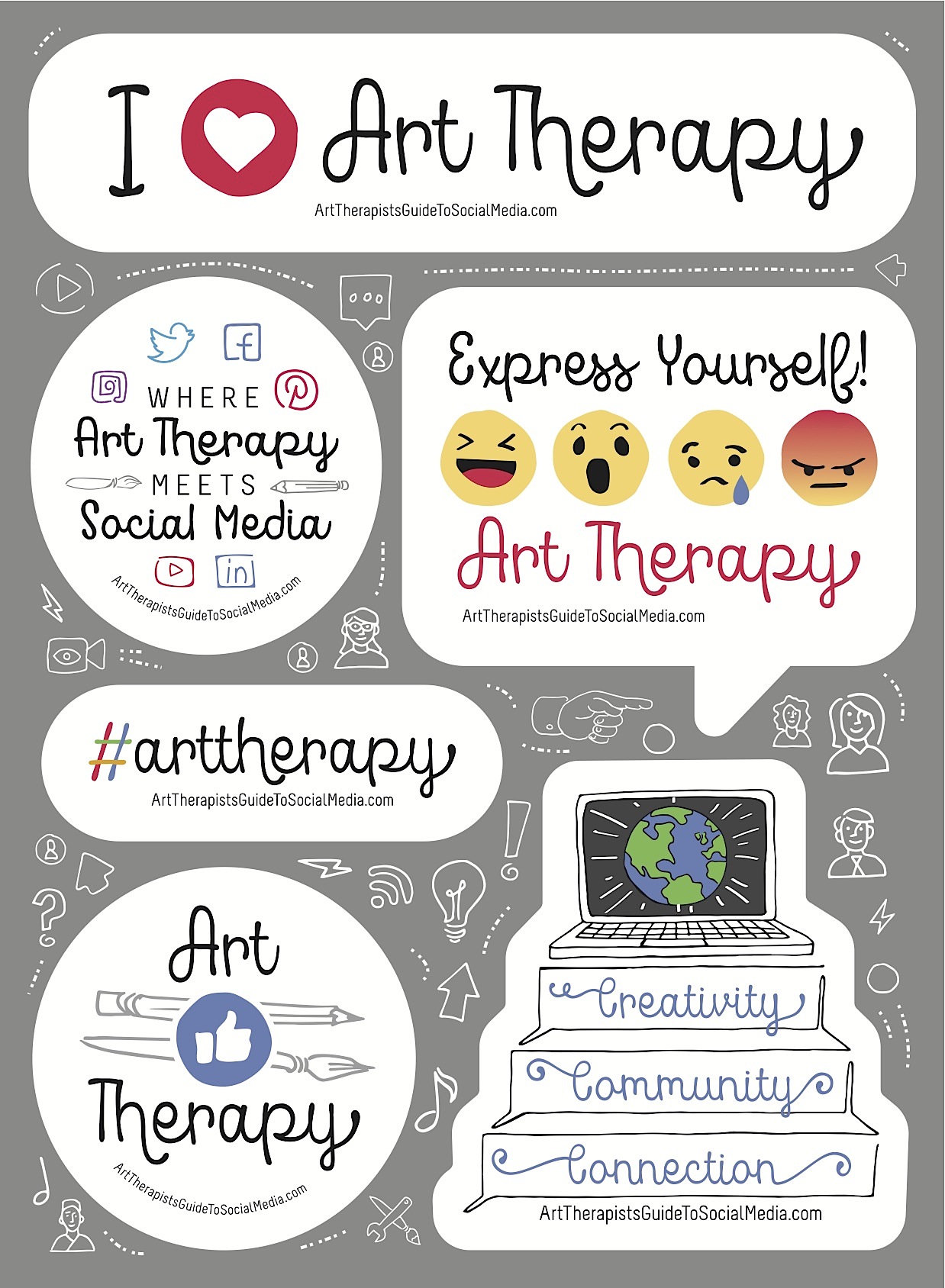
This time of year can motivate us to make changes, embark on new things, and set goals we want to accomplish both personally and professionally. It is also a good time to try and start new practices and routines that will be of benefit to our wellbeing, relationships, work, and daily life in the year ahead. This post inspired by topics in The Art Therapist’s Guide to Social Media, offers some to-do’s that art therapists to-be and art therapists can revisit, learn more about, or begin implementing related to professional social media use and online activity for the year ahead.
An Art Therapist’s New Year Checklist for Social Media:
☐ Take time to check your privacy settings on your social media profiles and sites. Remember to maintain awareness and management throughout the year;

☐ Find out about and review any social media policies or considerations that have been instituted at your university, workplace, and the communities or programs you are part of;
☐ Google your name to be aware of what content is available about you online. These results are also what others are viewing when they google or do an Internet search for you;
☐ Keep your LinkedIn profile updated;
☐ Be aware of your “Three Degrees of Influence”;
☐ Keep client content (art expressions, interactions, conversations- both negative, positive, and even when not using identifying information) off your personal social media networks of friends and family. When sharing online in professional or educational forums, protect identifying information, obtain consent, and consider the intention;
☐ If you are an art therapist in private practice or own an art therapy business, consider creating a social media policy to use with your clients;
☐ Strengthen your resources and understanding of digital social responsibility as a clinician;

☐ Remember to pause before you post online. Mindfully think about your post’s possible impact and influence, not just in relationship to your work as an art therapist, but also as a representative of the profession at-large. We are all ambassadors of art therapy on and offline;

☐ If you are an art therapy blogger, draft a one year editorial calendar to plan possible topics, content, and consistent scheduling;
☐ Practice and model global digital citizenship;

☐ Use social media to discover/learn a new art technique, media, artist, or creative inspiration;
☐ Identify and develop a social media sharing and delivery strategy that empowers your professional self, values, and work;
☐ Take an inventory of your digital assets. How you can leverage or enhance existing resources to promote and bring education to your work, art therapy, the populations you serve, and its benefits? Are there digital assets would you like to develop this year?
☐ Become aware of your digital footprint as you use the Internet and share online.

Taking on the above checklist can empower us as art therapists to take ownership of our digital presence, activity, and choices we make (or don’t make) online. Smart practices to start and integrate!
*****
Save






 (Front)
(Front) (Back Liner)
(Back Liner)










 This week’s interview features Jade Herriman, a transpersonal Art Therapist and accredited Barbara Sher Life Coach based in Sydney, Australia. She works as an art therapist with clients in mental health, women’s health, and parents and children, as well as supporting professional women with many interests to bring their creative dreams to life. She is a keen art maker, participates in multiple mail art projects, and loves the way creativity can be a release, joy, mirror, comfort, inspiration and more. She loves social media for the connections it brings.
This week’s interview features Jade Herriman, a transpersonal Art Therapist and accredited Barbara Sher Life Coach based in Sydney, Australia. She works as an art therapist with clients in mental health, women’s health, and parents and children, as well as supporting professional women with many interests to bring their creative dreams to life. She is a keen art maker, participates in multiple mail art projects, and loves the way creativity can be a release, joy, mirror, comfort, inspiration and more. She loves social media for the connections it brings. In this chat Jade reflects on her digital presence online as an art therapist and artist, including her blogging practices and strategies for engaging on different social media platforms such as Twitter, Instagram, and Facebook. Jade also shares her insights about the benefits of using social media as an art therapist, as well as some of the challenges.
In this chat Jade reflects on her digital presence online as an art therapist and artist, including her blogging practices and strategies for engaging on different social media platforms such as Twitter, Instagram, and Facebook. Jade also shares her insights about the benefits of using social media as an art therapist, as well as some of the challenges. Art Therapists on the Grid: Art Therapy Meets Social Media Conversations is a weekly interview series this summer featuring a variety of art therapists and how they use the power of the Internet and social media in relationship to sharing their work with others, professional development, nurturing creativity, cultivating community and more.
Art Therapists on the Grid: Art Therapy Meets Social Media Conversations is a weekly interview series this summer featuring a variety of art therapists and how they use the power of the Internet and social media in relationship to sharing their work with others, professional development, nurturing creativity, cultivating community and more. From Petrea’s current site
From Petrea’s current site
You must be logged in to post a comment.